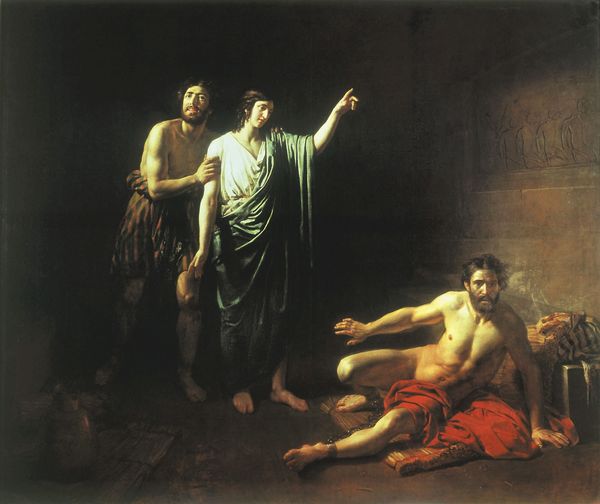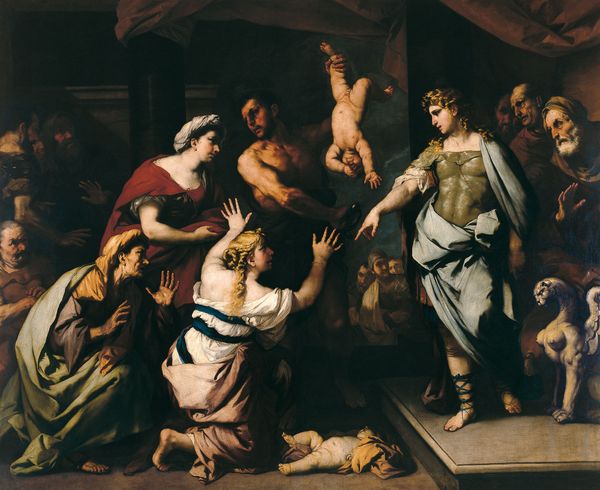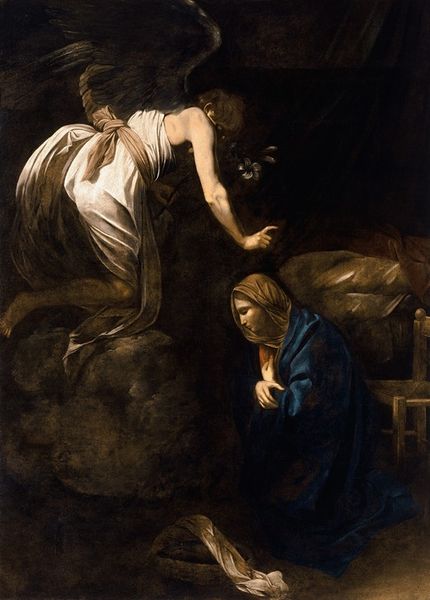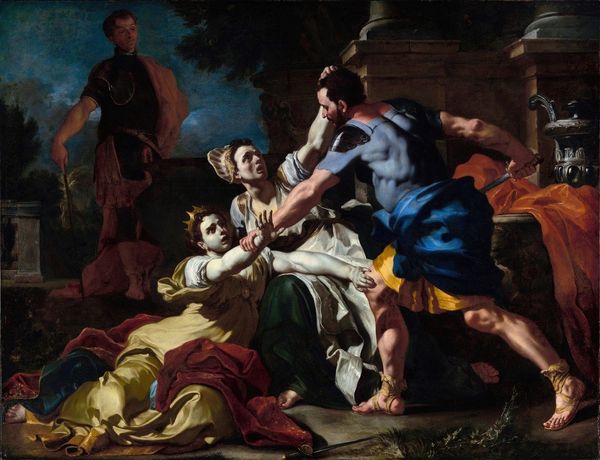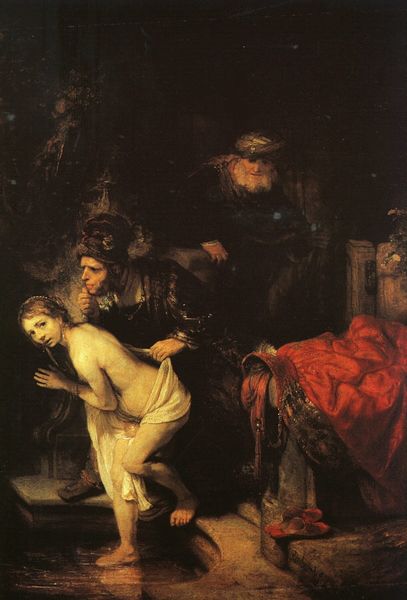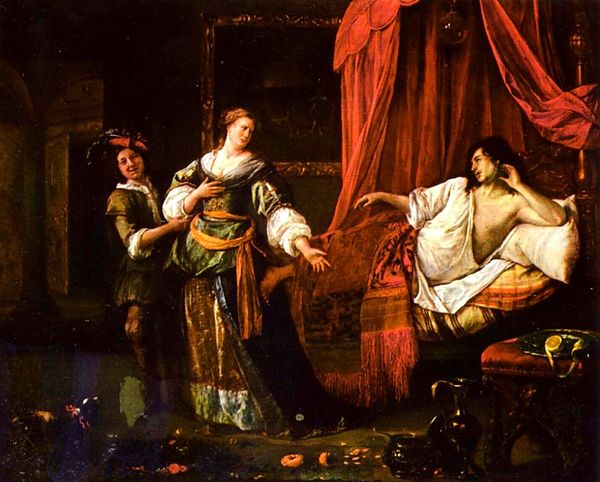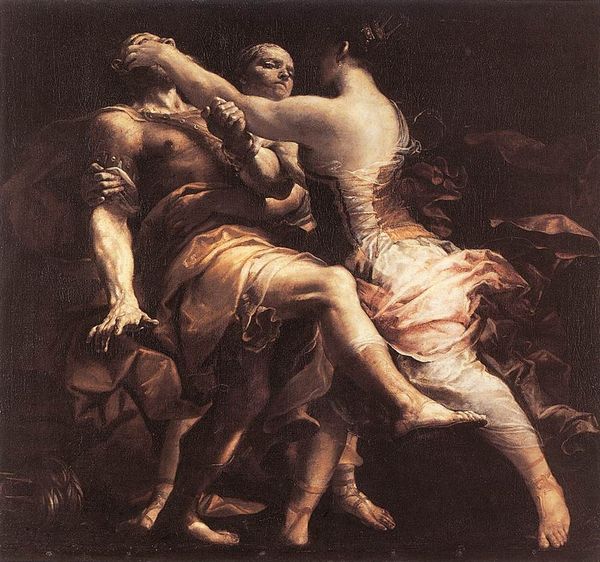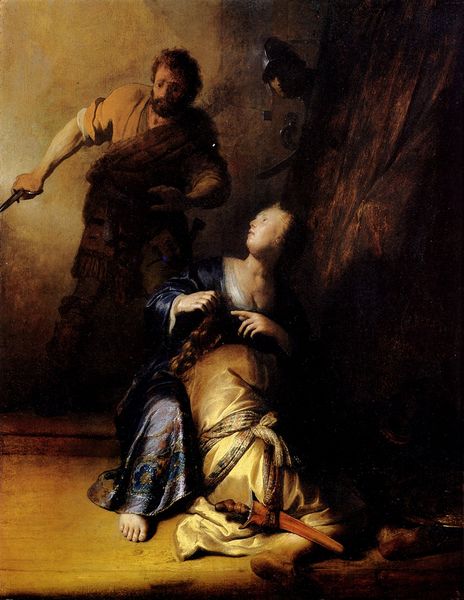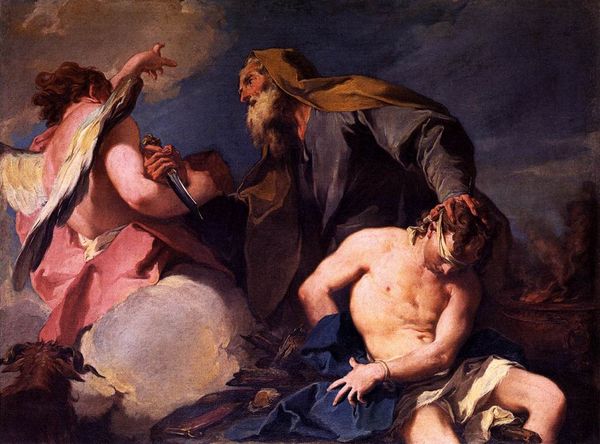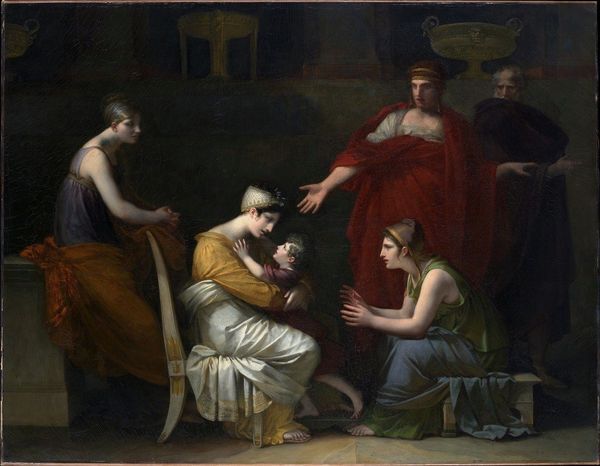
painting, oil-paint
#
narrative-art
#
baroque
#
painting
#
oil-paint
#
figuration
#
christianity
#
genre-painting
#
history-painting
#
nude
Dimensions: 196.5 x 245.3 cm
Copyright: Public domain
Curator: Bartolomé Estebán Murillo’s “Joseph and Potiphar's Wife,” painted in 1648, presents us with a dramatic, almost theatrical scene rendered in oil. My first impression is of the stark contrast – both in color and in emotion. Editor: I see a painting of high moral drama played out within a deeply troubling and timeless power dynamic. Here, the attempted seduction speaks to broader narratives of gender, sexuality, and class in seventeenth-century Spain. What does the narrative tell us about control, the power of women within the domestic space, and the vulnerability of those perceived as socially inferior, namely Joseph, as an enslaved man? Curator: Absolutely. Note how the figures are illuminated against a dark background, a classic Baroque technique enhancing the tension. Murillo masterfully uses diagonals—the thrust of Joseph’s body as he flees, mirrored by the grasping reach of Potiphar’s Wife—to convey movement and turmoil. I am drawn to Joseph's cloak which gives him the figure of an angel as he rejects sin. Editor: Let’s not overlook Potiphar’s Wife; she is not merely a villain but embodies the complexities of female desire and agency within a restrictive patriarchal structure. By fixating on Joseph’s virtue and Potiphar's wife's sin we overlook the fact that as an enslaved person Joseph could not have possibly provided consent within that domestic setting. Curator: The loose brushwork, particularly evident in the drapery and the bedding, contrasts sharply with the more polished rendering of the figures' skin, adding texture and visual interest to this complicated reading. Look at the richness of the patterned rug and the play of light on the silks—materiality underscores the story. Editor: We could unpack how Murillo both reinforces and potentially subverts prevailing societal attitudes. His piece, a biblical story so charged with potential for abuse and marginalization, reminds us how visual culture perpetuates power relations. This act forever cemented a stain on the reputation of Potiphar's wife that still reverberates today. Curator: It's intriguing to observe how Murillo balances visual storytelling with dynamic composition; the whole feels precariously balanced as in a fleeting dramatic stage play. Editor: Indeed, it prompts essential conversations around representation, social power, and narrative framing.
Comments
No comments
Be the first to comment and join the conversation on the ultimate creative platform.
